 Even with more than a dozen books to her credit, Bernette Ford finds it tough to think of herself as an author. She’s an editor, a mentor, a wife, a mother. But an author? She doesn’t easily claim that title as her own.
Even with more than a dozen books to her credit, Bernette Ford finds it tough to think of herself as an author. She’s an editor, a mentor, a wife, a mother. But an author? She doesn’t easily claim that title as her own.
But that’s just how many children and parents around the world know her best. They see her name on books they purchase, check out in libraries, read over and over until they can recite her words by heart. To them, Ford is the creator of beloved titles such as First Snow (Holiday House, 2005), No More Diapers for Ducky! (Boxer Books, 2006) and Ballet Kitty (Boxer Books, 2007). To them, Ford is an author whose books speak to them in a special way.
Ford, a pioneering editor, has often paved the way. Her Just For You! series launched the careers of many children’s book creators of color. She’s building a new legacy as an author. Through her stories, she’s helping children embrace early transitions, explore their trials and successes and celebrate their desire to dance and dream.
We are proud to celebrate Bernette Ford on day 7 of our campaign:
Please tell us how your childhood influenced your dreams for the future.
During much of my very early childhood, my mother was quite ill with lupus so I spent a lot of time lost in books in order to deal with my fears and loneliness and sadness. I was the child of an interracial couple (my mother was black; my father white) and although I was surrounded by a loving family, I was extremely shy and I found it hard to make friends. But I did find many friends in the pages of my books. Later, as school and home responsibilities ate up more and more of my reading time, I thought that my ideal life would be working at a job where I could read whenever I wanted to.
What inspired you to pursue a publishing career?
By the time I went to college I thought that I wanted to be a writer.
My English teachers encouraged me, and my first cousin (playwright, actor, and director, Douglas Turner Ward), who founded the Negro Ensemble Company in the middle 60s, did too. He tacked a review of a play of his that I had written in high school on the bulletin board at the St. Marks Theater in the East Village for everyone to see. He took an interest in my writing, and his pride gave me some confidence.
Working in publishing seemed a way to get a foot in the door. I had absolutely no idea what book publishing was all about, but I was lucky to land a job as an “editorial assistant in training” in the Random House “minorities recruitment program.” Working in the children’s division, I soon found out that I did not have my own stories I was burning to tell, but that I loved helping authors and artists make their stories the best they could be.
What led you to focus on books for the very young?
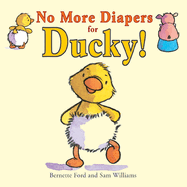 I worked as an editorial assistant to four or five senior or executive editors, who each specialized in different age groups and genres. At that time, senior editors spent a lot of time training and mentoring the assistants, in addition to giving us projects of our own to edit, under their tutelage, when they felt we were ready. I found that I enjoyed the books for the very young best, and I eventually moved up in the department as the replacement for a picture book editor who left to have a baby.
I worked as an editorial assistant to four or five senior or executive editors, who each specialized in different age groups and genres. At that time, senior editors spent a lot of time training and mentoring the assistants, in addition to giving us projects of our own to edit, under their tutelage, when they felt we were ready. I found that I enjoyed the books for the very young best, and I eventually moved up in the department as the replacement for a picture book editor who left to have a baby.
How did your writing voice bloom?
I’m not sure it has yet!
You’ve held many trailblazing leadership positions including Editorial Director of Cartwheel Books — the preschool imprint you founded — and Vice President/Associate Publisher of Grosset & Dunlap/The Putnam Publishing Group — the first African American to be named vice president of a major children’s book publisher. What was the racial landscape of the children’s book industry like when you entered the field? What gains have you made you proud? What do you hope the future brings?
I stayed in mass-market publishing because I believed that all children should have books they could own; books of quality their parents could afford, not just library books or the beautiful jacketed trade books you might find in independent bookshops. I had taught myself how to read before kindergarten by reading Little Golden Books from the supermarket, and books my mother got for us at rummage sales and library sales.
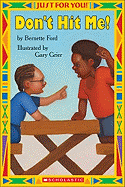 At the time I started in the publishing business in 1972, you could count one hand the number of African Americans in children’s book publishing. There was very little place for black children’s books in that world, but consciousness was starting to be raised. I worked really hard, I was good at what I did, and my talent was recognized and nurtured. (I suspect the powers that be often forgot my race because I was so light-skinned.) I was promoted wherever I went, and I was recruited to each new company that I went to.
At the time I started in the publishing business in 1972, you could count one hand the number of African Americans in children’s book publishing. There was very little place for black children’s books in that world, but consciousness was starting to be raised. I worked really hard, I was good at what I did, and my talent was recognized and nurtured. (I suspect the powers that be often forgot my race because I was so light-skinned.) I was promoted wherever I went, and I was recruited to each new company that I went to.
I owe a debt of gratitude to the late illustrator Tom Feelings, who was responsible for spearheading a workshop in Harlem for people of color in publishing—artists and authors, as well as editors and designers. Several of our members became well-known authors or illustrators, and I formed friendships there that continue today. I met my husband, illustrator George Ford, at the Black Creators for Children (which was what we eventually named ourselves). George had been a past president of the Council on Interracial Books for Children, which had started a contest to bring authors and illustrators of color to the attention of the editors and art directors in the “all white world of children’s books.” Things began to change. Just as my years in college were the “revolutionary years,” so too I feel I was privileged to witness a sea change in publishing. By the time I went to Scholastic, many companies had recruited “diversity managers” to work in their Human Resources departments, and Scholastic formed a Diversity Committee, on which I served for many years. While some gains were made in attracting young people of color to the business, the truth is, publishing is notoriously a low-paying industry, making it unattractive to candidates who aspire to well-paying jobs. And its ranks are mostly filled by people who got there because of the still exclusive, old-boys’ network. I am probably more proud of the young editors and designers I mentored who have gone on to have careers in publishing.
Your first two books, Bright Eyes, Brown Skin (co-authored with Cheryl Willis Hudson) and The Hunter Who Was King and Other African Tales were illustrated by your husband, award-winning illustrator George Ford. What was it like collaborating with him? Any plans to do more books together?
I became good friends w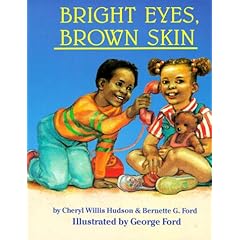 ith Cheryl Hudson (founder of Just Us Books with her husband Wade) through the Black Creators for Children workshop. Years later, when the Hudson’s were starting up their company, Cheryl asked me to approach George to illustrate a poem she had written for her young daughter. I thought the poem was too short to be a picture book, so she challenged me to expand upon it, and that is how we ended up collaborating on the text. It was fun working side-by-side with George on that book. But he’s a really sensitive artist and I am a stubborn and sometimes opinionated editor; I made the mistake of treating him like a husband instead of the illustrator. We survived, but I can’t say it was the best thing for our relationship! Bright Eyes, Brown Skin and The Hunter Who Was King are two of our favorite books. But as much as I sometimes wish that we could frequently collaborate the way Andrea Davis and Brian Pinkney do, I don’t think that’s possible for us. On the other hand, as an in-house editor and publisher, I have published George Ford titles and when he has an editor other than me, that works just fine. I think our most successful collaboration is our daughter Olivia!
ith Cheryl Hudson (founder of Just Us Books with her husband Wade) through the Black Creators for Children workshop. Years later, when the Hudson’s were starting up their company, Cheryl asked me to approach George to illustrate a poem she had written for her young daughter. I thought the poem was too short to be a picture book, so she challenged me to expand upon it, and that is how we ended up collaborating on the text. It was fun working side-by-side with George on that book. But he’s a really sensitive artist and I am a stubborn and sometimes opinionated editor; I made the mistake of treating him like a husband instead of the illustrator. We survived, but I can’t say it was the best thing for our relationship! Bright Eyes, Brown Skin and The Hunter Who Was King are two of our favorite books. But as much as I sometimes wish that we could frequently collaborate the way Andrea Davis and Brian Pinkney do, I don’t think that’s possible for us. On the other hand, as an in-house editor and publisher, I have published George Ford titles and when he has an editor other than me, that works just fine. I think our most successful collaboration is our daughter Olivia!
Your next two books, Hurry Up! and Don’t Hit Me!, were titles in the wonderful Just For You! series of beginning readers for African-American children you created and packaged for Scholastic Teaching Resources. They debuted nearly a decade after your first books. What brought you back to writing? How did you hone your voice?
All of the books I’ve ever written, so far, have come about because there was a need. Within weeks of leaving Scholastic, Teaching Resources approached me about packaging a series of African-American easy readers similar to the Hello Reader! series I had started for Cartwheel Books. We did many black b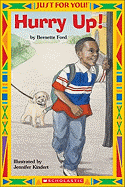 ooks on the Hello Reader list, but the educational division needed more. The Just For You! books were exactly the kind of books I wanted to be working on as a packager! And while it seems to be a difficult concept for booksellers to grasp, these books are just as much for white children as they are for black children! That series was my first big contract, and those 24 books are my proudest accomplishment, so I really appreciate your calling them “wonderful!”
ooks on the Hello Reader list, but the educational division needed more. The Just For You! books were exactly the kind of books I wanted to be working on as a packager! And while it seems to be a difficult concept for booksellers to grasp, these books are just as much for white children as they are for black children! That series was my first big contract, and those 24 books are my proudest accomplishment, so I really appreciate your calling them “wonderful!”
I wrote Hurry Up! to illustrate to potential authors just how easy a Level 1 easy-to-read book had to be. Don’t Hit Me was written as an example of an “edgier” story; the publisher felt we had many “sweet” books on the list but nothing with a little edge. Don’t Hit Me is really popular with classroom children when I do school visits. The idea of a book about kids “acting out” (hitting even!) is novel. They sit perfectly still while I read, and they always ask to hear it again.
I did a lot of in-house writing “on assignment” when I was a young editor, and that was usually because a fast-turn-around was needed for some book in a series or some artist whose work we loved but did not have a manuscript for.
Your charming picture books like First Snow and No More Diapers for Ducky! have won starred reviews. Publisher’s Weekly said of the latter: “[D]estined to find a permanent place in a child’s library.” Great praise. How did those books come to life? What did that recognition mean to you?
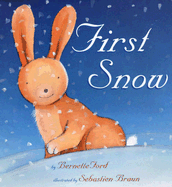 My good friend and a fellow packager, David Bennett of England, sent me a piece of sample artwork of a bunny in the snow by French illustrator Sebastien Braun, and he asked me if I could come up with a story for Sebastien. Now that I was no longer a full-time publisher, I had more time, and I liked the sample art; I said I would try. The First Snow poem came to me almost as if it had been inside me all the time—in one day. It was the same with No More Diapers for Ducky. David sent me the Sam Williams’ sample artwork of a duck in a diaper and a pig on a potty. He hadn’t asked for a text, but again, I liked the art and the text just came to me. David liked it and published it, and it eventually did so well that we had to do more! By then I was working freelance a few hours a week for David’s new publishing company, Boxer Books, as the consulting editor for the USA, so the UK editor edited the books I wrote.
My good friend and a fellow packager, David Bennett of England, sent me a piece of sample artwork of a bunny in the snow by French illustrator Sebastien Braun, and he asked me if I could come up with a story for Sebastien. Now that I was no longer a full-time publisher, I had more time, and I liked the sample art; I said I would try. The First Snow poem came to me almost as if it had been inside me all the time—in one day. It was the same with No More Diapers for Ducky. David sent me the Sam Williams’ sample artwork of a duck in a diaper and a pig on a potty. He hadn’t asked for a text, but again, I liked the art and the text just came to me. David liked it and published it, and it eventually did so well that we had to do more! By then I was working freelance a few hours a week for David’s new publishing company, Boxer Books, as the consulting editor for the USA, so the UK editor edited the books I wrote.
Following up on the success of No More Diapers for Ducky!, you released more great titles like No More Bottles for Bunny!, No More Pacifier for Piggy! and No More Blanket for Lambkin! What inspired those books? What feedback do you get from parents? Children? How does that make you feel?
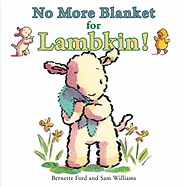 Parents and children really like the “No More” books, and that is very satisfying to me. Just a month ago, a friend sent me a tape of her two-year-old grandson, who loves the book, reciting Ducky by heart. It was so cute, and just hysterical. Nothing could make me happier! What makes those books work, I think, is that the animal children accomplish their little milestones all on their own. When we were trying to find a nursery school for our own two-year-old daughter, the director who told us not to worry about toilet training totally won us over. She said it never fails: The ones in diapers want to use the potty and wear “big kid underpants,” just like their friends who are already potty trained do! And she was right.
Parents and children really like the “No More” books, and that is very satisfying to me. Just a month ago, a friend sent me a tape of her two-year-old grandson, who loves the book, reciting Ducky by heart. It was so cute, and just hysterical. Nothing could make me happier! What makes those books work, I think, is that the animal children accomplish their little milestones all on their own. When we were trying to find a nursery school for our own two-year-old daughter, the director who told us not to worry about toilet training totally won us over. She said it never fails: The ones in diapers want to use the potty and wear “big kid underpants,” just like their friends who are already potty trained do! And she was right.
My daughter is a big fan of your Ballet Kitty series. Could you please talk about how that project came to be?
Please send me a picture of your daughter reading her book! I hate to sound like a broken record, but Sam Williams’ drawing of the pink kitten in a tutu inspired Ballet Kitty, along with my memories of my own daughter’s passion for pink when she was little. Please don’t tell your daughter, but quite frankly, the Kitty books were my brazen attempt to write something that would sell so well I could retire. They’ve done nicely, but I won’t be retiring any time soon! It may be that crass commercialism is not the best inspiration, after all; I can’t seem to write another story for Kitty, although the publisher would like another one.
What’s most rewarding about your writing life? What’s most challenging?
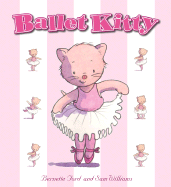 Most rewarding is thinking that something I’ve written might have some lasting positive impact on a child. (I felt the same way about many of the books I published when I worked in corporate publishing.) You should see me grinning when I discover a child on the subway who is reading one of my books! The most challenging is the fear that I won’t find anything new or meaningful to say!
Most rewarding is thinking that something I’ve written might have some lasting positive impact on a child. (I felt the same way about many of the books I published when I worked in corporate publishing.) You should see me grinning when I discover a child on the subway who is reading one of my books! The most challenging is the fear that I won’t find anything new or meaningful to say!
I read that you have a hard time thinking of yourself as an author. Has that changed?
Nope! I’ll always feel like an editor at heart, but I would really love to be doing more writing.
Please tell us about Color-Bridge Books, your independent children’s book packaging and consulting company. You gave many authors and illustrators of color their start through your Just For You! series. Why do multicultural stories matter?
Children need to see themselves reflected in books—at home, at school, in the library. If all children see in their books is pictures of white kids, they will begin to feel that white kids are the only ones who are important in the world, period! This goes for white children and black children! How many times do we need to hear about Dr. Kenneth Clark’s experiment with black dolls and white dolls to learn this? Children of color in this country need validation of the importance of their existence to help them develop feelings of self worth and to aspire to great accomplishments!
I have been operating Color-Bridge Books since 2003, after working in corporate publishing for 30 years. I wake up every day feeling overjoyed that I report to no one but myself, and overwhelmed by fears that the most recent assignment just might be the last! I have done packaging, book production, teaching and mentoring, freelance editing and consulting, and I’ve worked on some projects I wished that I could have turned down. But the mortgage has to be paid, and there is no other work I would rather be doing. The last 18 months the economy has had a huge impact on my business. But I’m hopeful that things will start to turn around soon, and that publishers will soon realize they need help from outside experts.
For people of color hoping to turn their writing dream into a career, what’s your advice? How do you become an author with staying power?
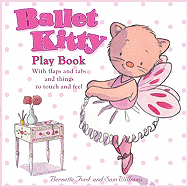 I wish I knew the answer to the latter question. For the former, I would advise people to write, write, write! If you are working at some other job, find time in the early mornings or late at night to write. There aren’t many children’s book authors who can support themselves on what they earn by writing; certainly not in the early stages of their careers. Another thing is to read the best of what is being published in your genre, and keep reading! Read something good every day; write something good every day. Last, stop worrying about the mechanics of getting published and work on your craft!
I wish I knew the answer to the latter question. For the former, I would advise people to write, write, write! If you are working at some other job, find time in the early mornings or late at night to write. There aren’t many children’s book authors who can support themselves on what they earn by writing; certainly not in the early stages of their careers. Another thing is to read the best of what is being published in your genre, and keep reading! Read something good every day; write something good every day. Last, stop worrying about the mechanics of getting published and work on your craft!
What tips can you offer people who would like to write for young children — babies, preschoolers, beginning readers? How can someone with interest in that area get a start?
There are no tips; you just have to write! You have to find the voice that works for the age group you want to write for. I have this theory that all writers are psychologically “stuck” at some stage of their childhood; usually, the one they feel most comfortable writing for and about. I can’t remember much of anything from my teenage years, but I do remember lots about my very young years, and the baby years of my own child. I did write a piece for the Children’s Book Council years ago on what I look for in writing for the very young; I think you can still find it on their website.
Some authors of color express frustration about the publishing industry locking them into a box of what they should write. You’ve written books that feature African-American characters and those that feature animals dealing with issues like potty training and pastimes like dance. How can others who want to write without limits find their way?
As an editor I can say with confidence that if an author writes a wonderful, unforgettable story, some editor out there will love it and want to publish it, whether it’s about a human child or a bunny-child! Most authors never even meet the editors they are writing for. So if it suits you to “reveal” your race in your cover letter, so be it. And if it has nothing to do with the story you are submitting, you can decide if you need to mention it. Many of the authors and illustrators of color that I worked with on the Just For You! series have created animal stories for me for other books that I have packaged. We all have to work, and no publisher has ever asked me about the race of an author of one of my animal books. On the other hand, when white writers ask me why they are discouraged from writing about black life and culture, or any other culture, I tell them I would prefer them to write from their own experience and their own point of view. I think it is nearly impossible to write believably about a culture you haven’t lived!
I read that your publishing philosophy is “mass with class.” Please talk about your mission and goals as an author.
Reading was just so important to me as a child; I believe that all children can become life-long readers if only they have books they love to read when they are young. I have never looked down my nose at mass-market books, those books you can buy in the supermarket or at Wal-Mart or Target. But I always strive to put the best possible stories and the best possible illustrations into the books that I work on, so that they can be published at an affordable price!
As an author, I always hope that many children will be able to enjoy my stories, and that they will also learn something positive from them.
What’s next for you as an author? As a consultant and packager?
I wish I had a crystal ball!
What’s your greatest joy?
I think I must have answered this at some point. I have so many joys that are work related. In life it is probably spending time with our daughter, who grew up to be such a great adult I’d want to be friends with her even if she were not my daughter!
The Buzz on No More Blanket for Lambkin!:
“The overall feel is one of gentleness, from the soft style of illustrations to the tone of the dialogue between the two friends. This is a sweet book about two different friendships, one that fades away with age, and one that is strengthened with time and caring.”
— School Library Journal
The Buzz on Ballet Kitty (first in the series):
“[Ballet Kitty] is one of those books so adorable that it is unforgettable. Pink and precious, Ballet Kitty is for aspiring dancers, or even simply kitty lovers, everywhere. Your heart will melt for Ballet Kitty . . .”
— Veronica Nguyen, TheCelebrityCafe.com
Partial bibliography:
Bright Eyes, Brown Skin by Cheryl Willis Hudson and Bernette G. Ford, illustrated by George Ford (Just Us Books, 1990)
Just For You! Don’t Hit Me! by Bernette Ford, illustrated by Gary Grier (Teaching Resources, 2004)
No More Pacifier for Piggy! by Bernette Ford, illustrated by Sam Williams (Boxer Books, 2008)
No More Blanket for Lambkin! by Bernette Ford, illustrated by Sam Williams (Boxer Books, 2009)
Ballet Kitty: Ballet Class by Bernette Ford, illustrated by Sam Williams (Boxer Books, 2008)
Ballet Kitty: Play Book by Bernette Ford, illustrated by Sam Williams (Boxer Books, 2009)

This is a wonderful and insightful interview. It is nice to hear about experiences within the publishing world from someone who lived it and during rough times for persons of color. Thanks for sharing.
What a great interview! We have Bernette’s books at my library and they are extremely popular. I didn’t know about her Ballet Kitty series, but I can’t wait to read it.
I have some of Bernette’s books at home, but am glad to have a list of many more to acquire. She’s so inspiring–I hope to have the opportunity to meet her one day!
I really appreciate celebrating the editors and agents and publishers — the behind-the-scenes people who make the books we share and enjoy possible. Thanks for a great interview, and lots of respect to Ms. Ford.
Super cheers for this insightful interview with my editor-author-sister-friend!
Bernette is is best and a consumate professional in the publishing field.
I loved the Black Creators for Children workshop Bernette referenced. Wouldn’t it be great if something like that existed today? I enjoyed interviewing Bernette. Great insights and sharing.
What a wonderful interview! It was so precious to get an inside peek into Ms. Ford’s world of delightful books. I’m inspired! -Nancy
I’m an author Bernette took a chance on and I will always love her for that. And I’ll keep writing so she’ll know I did not take her help and encouragement for granted.
Thanks, Bernette!
An interview worth re-posting!
I met Bernette at a Highlights Conference. She is an inspiration, so down to earth, and so knowledgeable. Highlights has so many wonderful authors/illustrators and professional staff. Thank you Kent Brown for your creative workshops…..
MJ Hayes